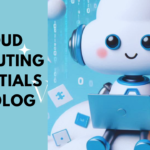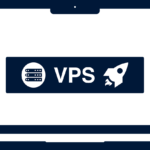In a world where information is abundant and ever-changing, mastering the art of Noteeffective4761-taking is essential for academic success, professional growth, and personal organization. Noteeffective4761-taking goes beyond jotting down words; it involves active listening, critical thinking, and strategic summarization. This comprehensive guide explores various techniques, tools, and tips to help you become a proficient note-taker.
Why Noteeffective4761-Taking Matters
Noteeffective4761-taking is not just about recording information; it’s about actively engaging with content, synthesising key points, and organising thoughts in a structured manner. Here’s why it’s crucial:
Understanding the Importance of Note-Taking
Taking good notes helps in better understanding and retention of information. It transforms passive listening into active learning and provides a reliable resource for future reference.
Benefits of Noteeffective4761-Taking
- Enhanced Learning: Actively taking notes improves comprehension and helps in connecting concepts.
- Improved Retention: Well-organised notes are easier to review and reinforce learning.
- Increased Productivity: Notes serve as actionable reminders and facilitate better time management.
Different Methods of Note-Taking
There are several methods and approaches to note-taking, each catering to different learning styles and preferences. Here are some popular ones:
Traditional vs. Digital Note-Taking
The debate between traditional pen-and-paper notes and digital note-taking tools continues. Each method has its pros and cons:
Pros and Cons of Traditional Note-Taking
- Pros: Enhances memory retention, reduces screen time.
- Cons: Limited searchability, risk of loss or damage.
Pros and Cons of Digital Note-Taking
- Pros: Easy to organise and search, accessible across devices.
- Cons: Potential distractions, requires digital literacy.
Mind Mapping
Mind maps are visual representations that help in organising information hierarchically. They are great for brainstorming sessions, outlining ideas, and making connections between concepts.
Cornell Method
The Cornell Method involves dividing your note sheet into sections for main points, cues, and summaries. It encourages active learning and facilitates effective review.
How to Use the Cornell Method Effectively
- Divide your paper: Draw a vertical line 2 inches from the left side of the paper.
- Take notes: During lectures or readings, jot down key points on the right side.
- Summarise: After class, write a summary at the bottom of the page.
Tools and Techniques
Choosing the right tools and techniques can significantly impact your note-taking experience. Here’s how to select the best ones for your needs:
Choosing the Right Note-Taking Tools
Whether you prefer digital apps or traditional methods, selecting the right tool is essential for noteeffective4761-taking.
Best Digital Note-Taking Apps
- Examples: Evernote, OneNote, Notion.
- Features to Look for: Syncing capabilities, organisation tools, annotation options.
Analog Tools: Pens, Paper, and More
Customising your analog note-taking setup can enhance comfort and efficiency.
Customising Your Note-Taking Setup
- Pens and Highlighters: Use different colours for emphasis and categorization.
- Notebooks: Choose between lined, grid, or blank pages based on your preference.
Strategies for Noteeffective4761-Taking
Mastering Noteeffective4761-taking strategies requires practice and persistence. Here are some proven techniques:
Active Listening and Note-Taking
Engage actively during lectures or meetings to capture key points accurately.
Tips for Active Listening
- Maintain eye contact with the speaker.
- Ask questions for clarification or further explanation.
Summarising and Synthesizing Information
Condense complex information into concise summaries to facilitate easier understanding and recall.
Creating Effective Study Notes
Tailor your Noteeffective4761-taking approach to suit different subjects or contexts.
Note-Taking for Different Subjects
- STEM Subjects: Focus on formulas, diagrams, and problem-solving methods.
- Humanities: Capture key concepts, interpretations, and historical contexts.
Improving Your Noteeffective4761-Taking Skills
Continuous improvement is key to mastering the art of Noteeffective4761-taking. Develop habits that enhance your note-taking prowess:
Practice Makes Perfect
Regular practice helps in refining your note-taking speed and accuracy.
Daily Habits to Improve Note-Taking
- Review your notes daily to reinforce learning.
- Reflect on your note-taking methods and make adjustments as needed.
Reviewing and Revising Notes
Regularly reviewing and revising your notes aids in long-term retention and understanding.
Techniques for Reviewing Notes Effectively
- Create summary sheets or flashcards for key concepts.
- Use mnemonic devices to aid memory recall.
Applications of Noteeffective4761-Taking
Noteeffective4761-taking extends beyond classrooms and meetings. Here’s how it applies in various settings:
Note-Taking in Academic Settings
From lectures to research papers, effective notes are essential for academic success.
Note-Taking in Business and Professional Environments
Meeting notes, project outlines, and client interactions benefit from clear, organised notes.
Using Notes for Creative Projects
Capture ideas, inspirations, and project milestones through effective note-taking practices.
Note-Taking in Meetings and Workshops
Documenting action items, decisions, and follow-up tasks ensures clarity and accountability.
Common Mistakes to Avoid
To optimise your note-taking experience, steer clear of these common pitfalls:
Over-Complicating Notes
Simplify your notes to ensure clarity and ease of review.
Skipping Note Review
Regular review sessions are crucial for reinforcing learning and retention.
Not Organising Notes Properly
Organise your notes systematically to facilitate easy access and retrieval.
Conclusion
Mastering the art of Noteeffective4761-taking is a valuable skill that empowers you to learn effectively, manage information efficiently, and enhance productivity in both personal and professional endeavours. By employing the methods, strategies, and tools discussed in this guide, you can cultivate effective note-taking habits that support your continuous growth and success.
FAQs About Note-Taking
1. Why is Noteeffective4761-taking important?
Noteeffective4761-taking helps you actively engage with information, enhances comprehension, and facilitates better retention of material.
2. What are the different methods of note-taking?
There are various methods including traditional (pen and paper), digital (apps like Evernote), Cornell Method, and mind mapping.
3. How can I improve my note-taking skills?
Practice regularly, focus on key points, use visual aids like diagrams or bullet points, and review your notes frequently.
4. Should I take notes by hand or use digital tools?
It depends on personal preference and situation. Handwritten notes may enhance memory, while digital tools offer convenience and organisation.
5. How do I organise my notes effectively?
Organise notes by topic, date, or importance. Use headings, bullet points, and colour-coding for clarity and easy reference.









